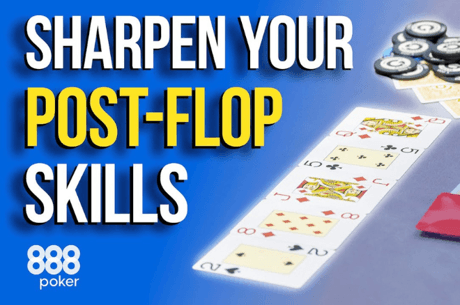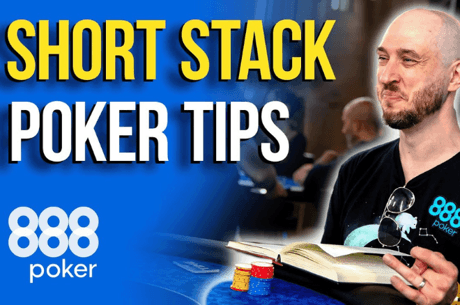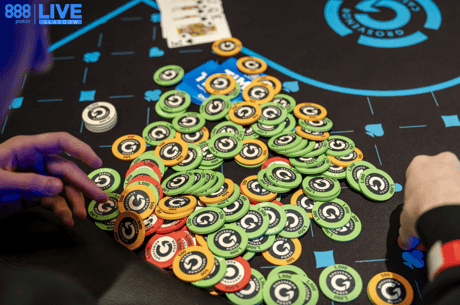Dispatches from the WSOP: Filling the Void; or, Three Ways to Plug Holes in Your Game

Like many poker players, Thinking Poker co-host Nate Meyvis is spending time this summer in Las Vegas playing cash games and events at the 2015 World Series of Poker. Here’s the latest from his time at the tables.
On the plane to Las Vegas, I feel mental routines fall away. Sometimes it starts even earlier than this.
Before I leave, my Boston-area surroundings feel different. The ordinary summer humidity commands attention as being unlike the desert I’m about to visit. I hear the sound of the traffic and remark on the daily routines of weaving around construction, jaywalking, and so on.
Out in the desert, roads are where they are because that is where they make sense to be. In Boston, roads are where they are because that’s where they happen to be, and we all do our best to adjust to them.
Out here in Las Vegas, or at least in the narrow part of the city that poker players stick to, there’s a lot that’s empty — the desert expanses around and through it; the cheap gestures at culture; the emotional cavities it points out to you, and deepens, and tries to get you to fill unhealthily.
You can criticize these examples of emptiness, but they encourage this resetting of routine and reorientation both to Vegas and to wherever you came to Vegas from. They permit us a certain kind of activity, because we’re wired to make meaning and fill voids — the bigger the void, the greater the impulse to fill it.
Renewing your awareness of common things is also useful in poker. Tournament players dwell too much on their bustout hands, when they’d be better off paying more attention to the many hands that led up to the end. In cash games, we worry a lot about how to play the nuts, even when we don’t know exactly what to do with the unpaired overcards we’ll have much more often. It’s inefficient, and it indicates a sort of dull thinking we can correct.
If you’re looking to dwell on the ordinary and fill some gaps in your poker game, consider the following:
1. Keep track of every big-blind situation you face for a day.
If you defend the same hands to an opening raise of twice the blind as you do to one of three times the blind, you’re making mistakes. If you’re playing tournaments and not keeping track of the size of the antes, you’re ignoring both your pot odds and your opponents’ incentives. If you decide whether to defend with hands like Jx6x-offsuit and Ax3x-offsuit without considering not only your opponents’ positions but also how aggressively and how well they play, you could be playing those hands better.
Particularly in tournaments but also in cash games, blind defense situations may seem repetitive but are in fact richly varied. If you’re playing reflexively in these spots, some attention to them will improve your poker.
2. Understand that it’s easy to categorize flops as “dry” or “draw-heavy,” but these come in degrees and depend heavily on the preflop action.
A 9x8x4x board might seem to have as many draws available as a 7x6x2x board, but in situations where ranges include Qx10x but not 10x8x, the latter is importantly “drier” than the former. In a three-bet pot, ranges are often so pair-heavy that flush draws will be scarce, especially if the Ax of the suit is on board or in your hand.
The texture of the flop should affect both your propensity to bet and the size of your bet. The best players can process flops automatically with dead accuracy, but for most of us, acting reflexively will lead us to bad checks, bad bets, and bad bet sizes. There are so many ways in which preflop ranges can interact with boards, and most of us often miss distinctions among them.
3. Keep in mind that in no-limit games, stack sizes are always relevant.
During the play of a hand, it’s easy to focus only on the cards and the size of the pot. Overlooking differences of only 10% to 20% of a stack size, however, can make you lose value, leave yourself an awkward stack, or cause you to fail to exert as much pressure as you should. Even worse is to succumb to the temptation to lump 150-big-blind and 400-big-blind stacks together as “deep.”
We all learn that stack sizes matter. Over time, though, many players train themselves out of considering this information on every decision of every hand.
Of course, you can’t get better at understanding flops or accounting stack sizes just by deciding to think about them. You can, however, turn automatic play into considered play, and these three areas are good places to look for information that you know how to use but are in the habit of not using.
Indeed, doing these things might do for your poker game what a good vacation can do for other parts of your life.
Be sure to check out Nate and Andrew Brokos on the Thinking Poker podcast, and for more from Nate visit his blog at natemeyvis.com.
Get all the latest PokerNews updates on your social media outlets. Follow us on Twitter and find us on both Facebook and Google+!









